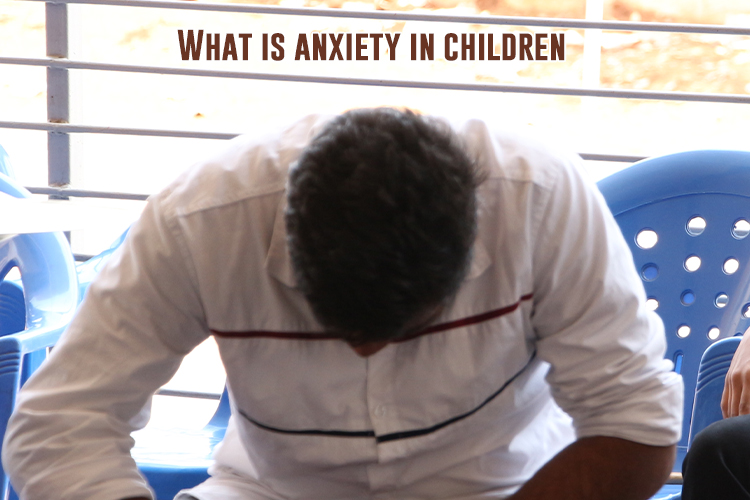Anxiety is your body’s natural response to stress. It is a feeling of fear or worry that comes from an array of things like genetics, environmental factors, and brain chemistry. Feeling anxious is a reaction to stress, where your body responds with fear or worry due to factors such as genetics, environment and brain chemistry. For teenagers anxiety can manifest as irritability and anger. Symptoms may involve difficulty sleeping along with signs like fatigue, headaches or stomach issues. Some teens hide their worries, which means signs of trouble can go unnoticed. Signs of anxiety in teenagers include being on edge sensitive, to criticism excessively self conscious, always anticipating events and avoiding challenging situations that trigger anxiety.
What are the common symptoms of anxiety in your teen?
Ever notice your teen acting differently? Anxiety might be the culprit. Here are some signs to look out for:
Physical symptoms:
- Frequent headaches or stomach aches without a clear cause
- Restlessness or difficulty sleeping
- Unexplained restlessness
Emotional Signs:
- Irritability or unexplained outbursts
- Constant worry or fear about everyday activities
- Avoiding interactions with others and formerly enjoyed activities…
Behavioral Changes:
- Decline in school performance
- Withdrawal from friends and family
- Reluctance to try new things or take risks
Understanding these signs can help you support your teen better.If you notice these actions, it may be beneficial to have a friendly conversation with your child to learn how he or she is feeling.
Recognising anxiety in children
Symptoms can include worries, feeling irritable or nervous, feeling restless, wound-up, on edge, being easily fatigued, difficulty concentrating, and/or mind going blank, as well as physical symptoms such as sleep problems, muscle tension, aches and pains in the form of headaches, stomach aches, or generalised body pain. Teens frequently have anxiety related to life transitions, such as starting the new school year, experiencing a change in relationships with family resulting from a sibling moving away, or having to deal with family issues.
It’s important to keep in mind, personality also matters. Certain people by nature young and old—tend to be more relaxed, while others have a tendency toward anxiousness. Pressures like trauma, loss, school struggles, and bullying can lead to health problems. Young people and adolescents may experience anxiety due to any of these factors. Teens may find it difficult to convey feelings into words, whereas adults may discuss feelings freely in public. It is important to show empathy for the child’s emotions.
What is the 3-3-3 rule for anxiety?
The 3-3-3 rule is a very helpful mindfulness method for young ones. It asks youngsters to name three visible items, three sounds, and three bodily components. It is really a pleasant game that helps children put worries aside and refocus on the present moment. Children who are a little older can use the 5-4-3-2-1 approach.
This technique requires you to name five visible objects, four tactile things, three auditory things, two olfactory things, and one taste sensation.
Three common mindfulness techniques which help manage anxiety in teens
Besides the 3-3-3 method, there are many mindfulness exercises that can help your child handle anxiety. Do those that follow:
- Mindful breathing:
Many meditation exercises focus on the breath. Show your child how to sit comfortably while paying attention to the flow of air into and out of the body.
- Eating mindfully:
Before giving your child food, have him explore it with touch, visual, and smell senses. Encourage your child to eat slowly after that so that children may appreciate every flavor and texture.
- Mindful walking:
Before providing your child food, have children examine it through the touch, visual, and smell senses. Encourage your child to eat carefully after that so that children can understand every flavor and texture.
Why is your teen feeling anxious?
What times are likely to cause concern and tension in children? The teenage years are filled with new experiences, opportunities, and challenges. Teenagers’ minds are evolving at this point, and everyone desires greater independence and autonomy. Because your child is nervous at this point, selecting when and how to discipline children can be complicated. There are several reasons for this. First, the conduct could be prompted by anxiety, which your youngster struggles to manage. For example, if children are scared, then may choose not to attend school. Alternatively, become upset for no apparent cause and throw tantrums. Children may also fidget, be aggressive, or appear distracted.
Anxiety may also be tied up to other difficulties that may affect the children’s behavior. Sometimes identifying the cause of the behavior may be hard, and this makes the solution complex to be identified.
Third, kids with anxiety can be very sensitive. Discipline that works for other kids may be too upsetting or create more anxiety. If you are scared and fearful, your child may pick up on those emotions. Children can show signs of anxiety, supported by evidence. Yet , both hereditary and learned behaviors might contribute to a child’s generalised anxiety disorder. Deep breathing, coloring, or using fidget toys can all help shift your concentration away from worrying thoughts and toward calm. Yet , keep in mind that not all coping skills are effective in all situations or for any child. Work on these abilities together and discuss when to apply each one.
- Authoritarian parenting:
It involves serious behaviors with children, can lead to considerable stress, despair, and a lack of engagement Children raised by authoritarian parents tend to be concerned about issues that would be unimportant to an usual child.Children with generalised anxiety disorder are 3.5 times more likely to have a mother who has the disorder. A child with a socially anxious dad is almost three times as likely to develop social anxiety disorder.
- Biological factors:
The brain has special chemicals, called neurotransmitters, that send messages back and forth to control the way a person feels. Serotonin and dopamine are two important neurotransmitters that, when disrupted, can cause feelings of anxiety and depression
- Learned behaviour:
Learning behaviour emphasises the crucial link between the way in which children and young people learn and grow social knowledge and behavior. In doing this the focus is upon establishing positive relationships across three elements of self, others and curriculum.
Growing up in a family with nervous or anxious members can “teach” a youngster to be apprehensive as well. Some teenagers are predisposed to anxiety due to temperament or genetics. Youth hormones emerge between the ages of 10 and 13, causing physical and emotional changes. It is believed that teenage girls going through puberty have higher amounts of the teen hormone estrogen and are more susceptible to depression.The key is to be watchful for any symptoms.
How can you help your teen with anxiety?
There are many reasons why youngsters require assistance in dealing with anxiety. As adults, we are responsible for finding the best solutions that will help our adolescent kids to become more confident. Understanding that anxiety is a genuine and difficult emotion for teenagers is the first step. As parents and caregivers, our support is crucial. It can make a great impact to simply be present, listen with understanding, and establish a safe, caring environment. Allow your youngster to communicate, express emotions and explain that having nervousness is natural from time to time. If necessary,Link your own life events to anxiety to make your youngster feel less alone. Create a routine that includes relaxation and enjoyable activities.
- Find what triggers your child’s worries.
- Help your child recognise when one is anxious and meet their daily needs.
- Encourage cutting down stimulants.
- Spend some quality time with them.
- Speak to a professional if you’re worried.
Strategies to manage anxiety directly include:
- Meditation: Introduce meditation or mindfulness practices into their routine.
- Distraction Techniques: Engage in activities that shift focus away from anxious thoughts.
- Visualisation: Encourage your teen to visualise calming and peaceful scenarios.
- Physical Activity: Regular exercise can help “burn off” excess anxiety and improve mood.
- Cognitive Techniques: Teach your teen to question and challenge negative thoughts.
- Communication: Encourage open dialogue about feelings with trusted individuals.
- Breathing Exercises: Practice deep breathing exercises to promote relaxation.
- Journaling: Keeping a diary can help your teen process emotions and track anxiety triggers over time.
By combining these supportive strategies with proactive techniques to manage anxiety, you can effectively assist your teen in managing their emotions and building resilience.
Anxiety in children is very common but often misunderstood. If you could recognise the signs and determine what provokes them, that would definitely help change the way your child is supported. We try to provide a caring environment at DPS Warangal to help our students in their fight against anxiety for a happier and healthier life. There needs to be open communication and an eye toward professional help when needed. Always be patient and kind; managing anxiety takes time. Together, we can make them feel good about themselves and boost their confidence.




